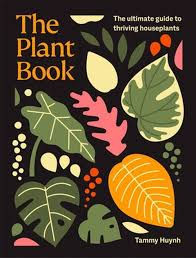Kiwi Country: Rural New Zealand in 100 Objects by Te Radar and Ruth Spencer
- NZ Booklovers

- 3 days ago
- 2 min read

Following in the style of other recent historical and culturally oriented books, Te Radar and Ruth have taken one hundred objects, places and things, as the starting point to explore rural life and culture in New Zealand . With their research into the stuff of Kiwi rural life and well-known as comedians and entertainers, I imagine this pair would make delightful dinner guests and event speakers too.
This collection of stories about the objects does not aim to be comprehensive or exhaustive, nor limit itself to a particular era of history. The authors have selected the things that have tickled their fancies and that have opened up opportunities to tell stories about the people who invented, adapted and used the chosen items. It is clear that it is the people, the innovative, practical and adaptable New Zealanders, that are at the heart of this book.
And, with illustrations confined to quirky and simple line drawings at the start of each segment, the information is conveyed through the conversational text, factual but laced with tongue-in-cheek humour.
They take us on a tour of the countryside, first to the homestead where we are reminded of such classics as the long-drop dunny and the farmer’s black singlet. While not strictly speaking confined to rural areas, other household items offer a nostalgic look at the Rawleigh’s tin, the washing machine mangle and Aunt Daisy’s Book of Handy Hints. The more contemporary egg carton and the ride-on mower segue to stories of their development. Then we head to the paddocks for a look at the evolution of the round hay bale, checking out the poplar shelter belts and bathtub water troughs, followed by a look at the pataka and the farming of kumara, onions and their mesh bags and the production of peas, starting with a description of the Watties’ Blossom Festival float of 1958. Then it’s down to the orchard, for a look at apples, cherries, tamarillos, kiwifruit, quince, wine corking and bee keeping. Notable in the livestock section is the dog whistle, as are the shed treasures that include number 8 wire, the 44-gallon drum and the resourceful efforts during World War Two to convert the farm tractor to a tank in case of enemy invasion. In a similar vein, chapters on the cowshed, the creek, the backblocks, smoko and the road, continue to offer a smorgasbord of items from statues to machinery, from buildings and bridges to plants and animals. For me, the last chapter resurrected so many memories of childhood car journeys, the roadside stalls with their honesty boxes, the school bus signs, the cattle stops, and the grader on so many dusty gravel roads.
Written with warmth, fondness and light-hearted humour, this volume is a valuable portmanteau of information, perfect for a rummage through, to spark memories and to learn something of our New Zealand rural life and our farming past.
Reviewer: Clare Lyon
Harper Collins



